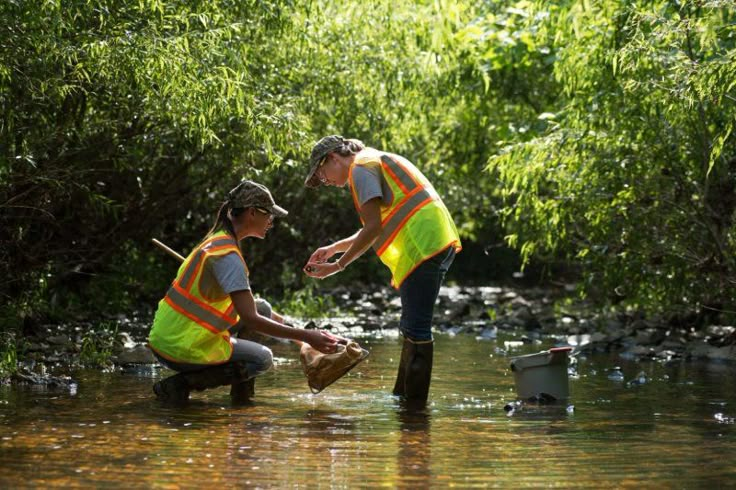"Silent Spring" by Rachel Carson

- Repoter 11
- 15 Apr, 2025
Overview: Silent Spring is a groundbreaking book written by biologist and environmentalist Rachel Carson, first published in 1962. The book raised awareness about the dangers of widespread pesticide use, particularly DDT, and its devastating effects on the environment, wildlife, and human health. Carson’s work is credited with igniting the modern environmental movement and raising public consciousness about the need for sustainable environmental practices. Silent Spring remains one of the most important books in the history of environmental science and advocacy. Summary: In Silent Spring, Rachel Carson meticulously documents the environmental consequences of using synthetic chemical pesticides, especially DDT. The title of the book refers to a future where the sound of birdsong is silenced due to the destruction of the natural world caused by the indiscriminate use of chemicals. Carson outlines how pesticides, designed to eliminate pests, often end up killing non-target species, including beneficial insects, birds, and even aquatic life. She also explores how these chemicals accumulate in the food chain, posing long-term threats to ecosystems and human health. One of the central themes of Silent Spring is the unintended consequences of pesticide use. Carson highlights the dangers of relying on these chemicals without fully understanding their ecological impact. She explains that pesticides do not only affect the targeted pests but also disrupt the broader ecosystem, leading to a decline in biodiversity and ecological imbalance. Through detailed case studies and scientific research, Carson illustrates how these chemicals seep into soil, water, and air, contaminating the environment and harming all living organisms in the process. In addition to focusing on the ecological damage caused by pesticides, Carson also criticizes the political and corporate interests that promoted pesticide use without regard for its environmental or health impacts. She warns against the unchecked power of the chemical industry and its influence over government agencies responsible for regulating pesticides. Carson advocates for a more cautious and responsible approach to pest control, emphasizing the need for ecological awareness, scientific research, and government regulation to ensure public health and environmental protection. Throughout the book, Carson stresses the importance of environmental stewardship and the need for humans to recognize their interconnectedness with the natural world. She calls for a shift in public attitudes toward nature, advocating for a more sustainable and harmonious relationship with the environment. Carson’s persuasive writing and scientific rigor helped make Silent Spring a powerful call to action, leading to increased public pressure for stronger environmental laws and regulations. Themes: Environmental Awareness and Ecological Impact: Silent Spring raises profound concerns about the impact of human activities on the environment. Carson highlights how the overuse of pesticides can disrupt ecosystems, endanger wildlife, and result in the loss of biodiversity. She emphasizes the need for a more holistic understanding of the environment and the long-term consequences of human actions. The Unintended Consequences of Technology: Carson illustrates how the use of technology, in the form of chemical pesticides, can have unintended and harmful consequences. Despite the initial benefits of pest control, the widespread and unregulated use of pesticides led to ecological damage, showing how technological advances can sometimes backfire if not properly managed and understood. The Role of Science in Environmental Protection: One of the key themes in Silent Spring is the importance of science in protecting the environment. Carson argues that scientific research should guide policy decisions regarding the use of chemicals and pesticides. She stresses the need for more rigorous research to understand the full effects of pesticides on ecosystems and human health. The Power of Industry and Government: Carson critiques the powerful influence of the chemical industry and the government’s role in enabling the widespread use of harmful pesticides. She argues that industry interests often overshadow public health and environmental concerns, leading to the proliferation of dangerous chemicals in the environment. Environmental Advocacy and Social Responsibility: Silent Spring is also a call to action for individuals and society as a whole to take responsibility for the environment. Carson encourages people to become more aware of their impact on the world and to advocate for policies that prioritize environmental protection and sustainability. Impact and Legacy: Silent Spring had a profound impact on both public opinion and policy. The book sparked a national conversation about the environmental consequences of pesticide use and raised awareness about the need for better regulation of chemicals. It contributed to the eventual ban of DDT in many countries and helped pave the way for the establishment of environmental protection agencies, such as the U.S. Environmental Protection Agency (EPA) in 1970. Carson’s work also inspired a generation of environmental activists and scientists to push for stronger environmental laws and more sustainable practices. Her ability to communicate complex scientific issues in a clear and accessible way made Silent Spring a powerful tool for raising public awareness and galvanizing action. Conclusion: Rachel Carson’s Silent Spring remains one of the most important works in the history of environmental literature. By highlighting the dangers of pesticide use and the broader ecological impacts of human activities, Carson forever changed the way people view the environment. Her work was instrumental in launching the modern environmental movement and continues to serve as a powerful reminder of the need for responsible stewardship of the planet. The book’s legacy endures as a call for greater environmental awareness, scientific inquiry, and collective action to protect the natural world for future generations.
Leave a Reply
Your email address will not be published. Required fields are marked *




